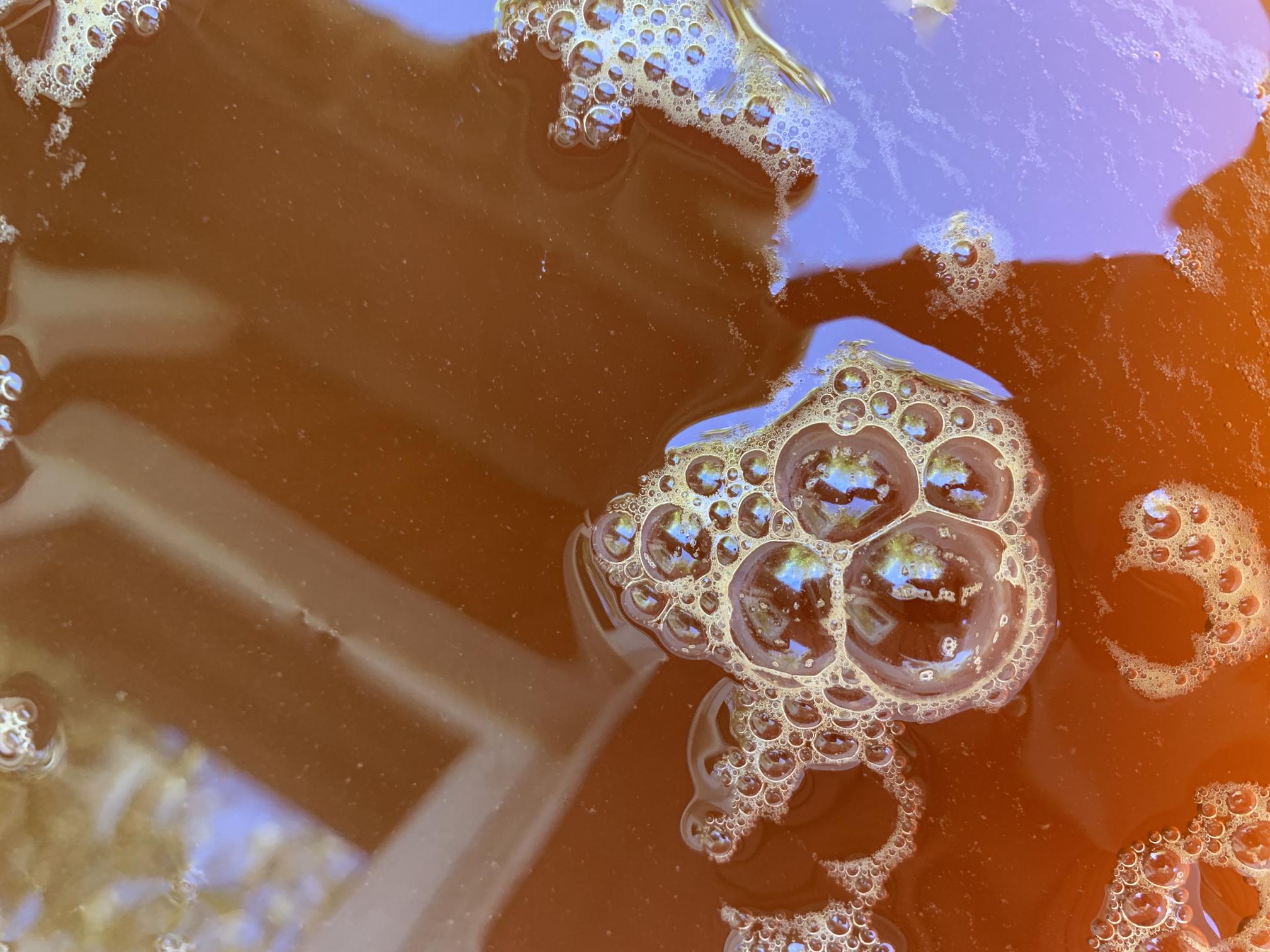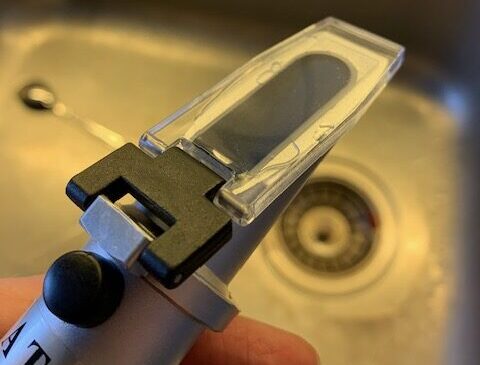What is cold crashing?
Cold crashing is the process of rapidly reducing the temperature of your beer after fermentation, typically to around 32-40°F (0-4°C). This rapid cooling encourages yeast and other particles in suspension to flocculate (clump together) and settle to the bottom of the fermenter, resulting in a clearer beer. Cold crashing is a common practice in brewing, particularly among homebrewers looking to improve the clarity and appearance of their beer.
Why cold crash a hazy IPA?
While hazy IPAs are known for their characteristic turbidity, cold crashing can still provide a number of benefits, such as:
1. Improved aroma and flavor: Cold crashing can help to lock in the desirable hop flavors and aromas that are often the focal point of a hazy IPA.
2. Enhanced mouthfeel: By removing some of the yeast and other particulates in suspension, cold crashing can contribute to a smoother, more enjoyable mouthfeel.
3. Reduced sediment: Although haze is a desirable characteristic in a hazy IPA, excessive sediment can detract from the overall drinking experience. Cold crashing can help to reduce the sediment in your finished beer.
Cold crashing and hop flavor retention
One concern that some brewers have when it comes to cold crashing a hazy IPA is the potential loss of hop flavor and aroma. This is because the process of cold crashing can cause some hop oils to precipitate out of the beer, resulting in a less hop-forward final product.
However, the benefits of cold crashing in terms of flavor and aroma retention often outweigh the potential drawbacks. By reducing the amount of yeast and other particulates in suspension, cold crashing can help to prevent the absorption of hop oils by the yeast, ultimately resulting in a beer with a more pronounced hop character.
Cold crashing and yeast health
Another consideration when cold crashing a hazy IPA is the potential impact on yeast health. When you rapidly cool the beer, the remaining yeast in suspension can become stressed, potentially leading to off-flavors or other undesirable characteristics in your finished beer.
To mitigate this risk, ensure that your fermentation is complete before cold crashing. This will help to ensure that the yeast has completed its job and is less likely to contribute off-flavors to your beer during the cold crashing process.
Cold crashing and oxidation
Oxidation is another concern when cold crashing a hazy IPA. Oxidation occurs when oxygen is introduced to the beer, which can cause a variety of off-flavors and negatively impact the beer’s overall flavor and aroma profile.
To minimize the risk of oxidation during cold crashing, ensure that your fermenter is properly sealed and that you avoid introducing any additional oxygen during the process. It may also be helpful to purge your fermenter with CO2 prior to cold crashing to help displace any oxygen that may be present.
How long should you cold crash a hazy IPA?
The length of time you should cold crash a hazy IPA depends on the desired level of clarity and the specific characteristics of your beer. Generally, cold crashing for 24-48 hours is sufficient to achieve the desired results. However, some brewers may choose to cold crash for a longer period of time to achieve a greater level of clarity.
Alternatives to cold crashing
If you’re concerned about the potential drawbacks of cold crashing a hazy IPA, there are some alternatives that you can consider, such as:
1. Biofine: Biofine is a clarifying agent that can be added to your beer to help encourage the flocculation of yeast and other particulates in suspension. This can be a useful alternative for those who are concerned about the potential impact of cold crashing on hop flavor and aroma retention.
2. Gelatin: Gelatin is another clarifying agent that can be used to help improve the clarity and appearance of your beer. Like Biofine, gelatin can help to encourage the flocculation of yeast and other particulates in suspension.
Conclusion: Should you cold crash a hazy IPA?
In conclusion, cold crashing a hazy IPA can provide a number of benefits, such as improved aroma and flavor, enhanced mouthfeel, and reduced sediment. However, it’s important to be aware of the potential drawbacks, such as the risk of oxidation and the impact on yeast health. By taking the necessary precautions and considering the specific characteristics of your beer, cold crashing can be an effective tool for improving the overall quality of your hazy IPA.
10 Facts about Cold Crashing a Hazy IPA:
1. Cold crashing is the process of rapidly reducing the temperature of your beer after fermentation.
2. Cold crashing can help to enhance the flavor, aroma, and appearance of a hazy IPA.
3. The process can also contribute to a smoother mouthfeel and reduced sediment in your finished beer.
4. Cold crashing can potentially cause some hop oils to precipitate out of the beer, but the overall benefits often outweigh the drawbacks.
5. The impact on yeast health is another consideration when cold crashing a hazy IPA.
6. To avoid potential off-flavors, ensure that your fermentation is complete before cold crashing.
7. Oxidation is another concern when cold crashing a hazy IPA.
8. To minimize the risk of oxidation, ensure your fermenter is properly sealed and consider purging with CO2 prior to cold crashing.
9. Cold crashing for 24-48 hours is typically sufficient to achieve the desired results.
10. Alternatives to cold crashing include using clarifying agents like Biofine and gelatin.
FAQs
What causes chill haze in cider?
Chill haze in cider is caused by the precipitation of proteins and polyphenols when the cider is chilled.
How does chill haze form?
Chill haze forms when proteins and polyphenols in beer react with each other at low temperatures, causing them to become insoluble and form a cloudy appearance.
How do you get rid of chill haze?
Chill haze can be reduced or eliminated by either adding fining agents such as gelatin or isinglass, or by filtering the beer before bottling or kegging.
Is cold crashing beer necessary?
Cold crashing beer is not necessary, but it can help improve clarity and reduce sediment in the final product.
Should I filter hazy IPA?
No, it is not necessary to filter a hazy IPA as the haze is a desirable characteristic of the style. Filtering can remove some of the hop and yeast flavors and aromas, which are important to the overall taste of the beer.
Does cold crashing cause chill haze?
Cold crashing can actually help prevent chill haze by causing proteins and other haze-causing compounds to settle out of the beer. However, if the beer is not properly conditioned or if it is exposed to temperature fluctuations after cold crashing, it can still develop chill haze.




